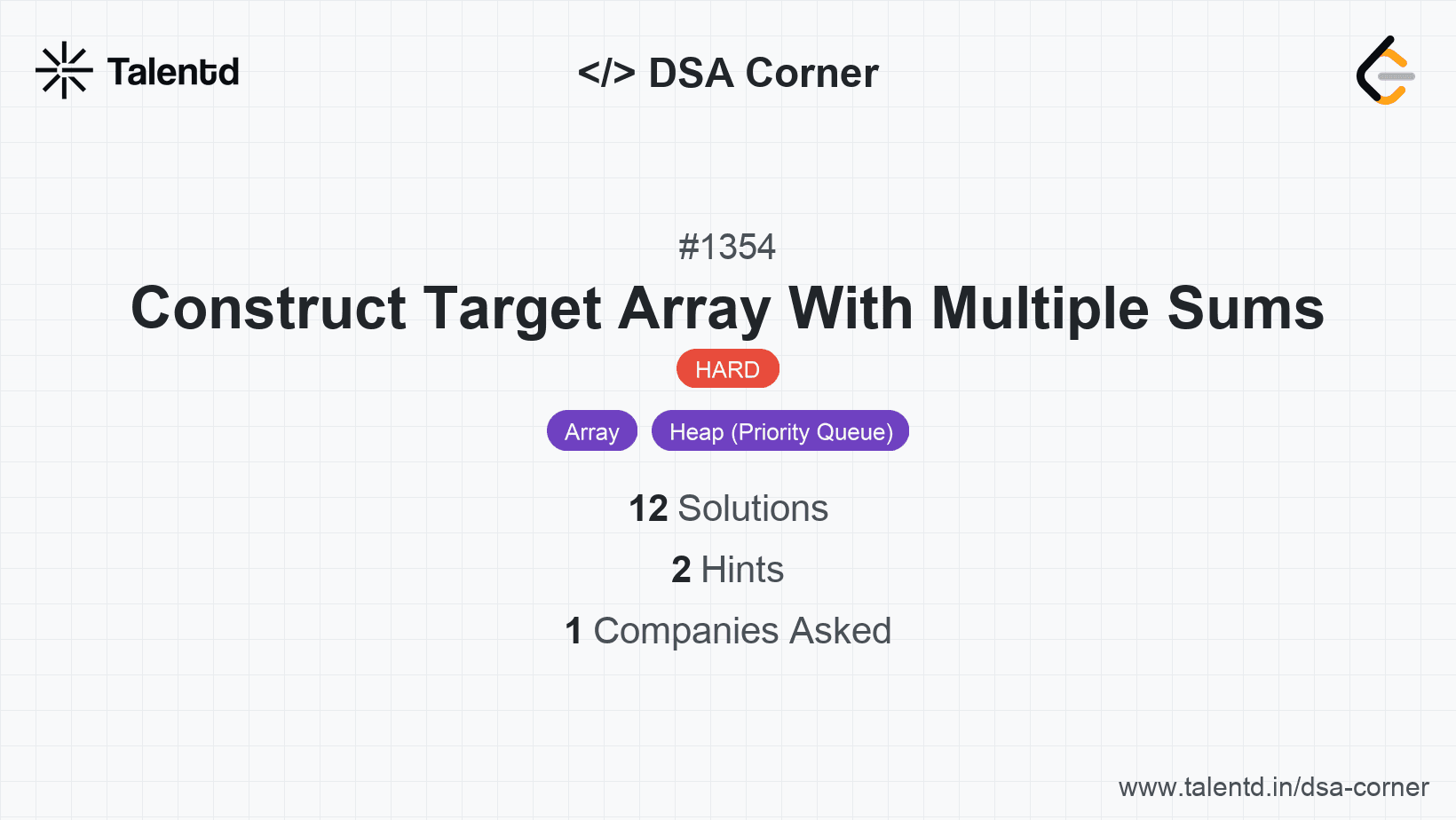
Sponsored
Sponsored
This approach uses a max-heap (priority queue) to efficiently track and operate on the largest element. The primary idea is to reverse the operation: starting from the target array, every large element in the target can be seen as the result of adding all smaller elements in the array to one of the array's elements during the last operation. By repeatedly transforming the largest element in this manner, we can verify if it is possible to reach the initial array of ones.
The time complexity is O(n log n * log maxValue) due to sorting and heap operations, where n is the number of elements and maxValue is the maximum integer in the target. The space complexity is O(1) since we are sorting and using in-place operations optimistically.
1import java.util.PriorityQueue;
2
3public class Solution {
4 public boolean isPossible(int[] target
This Java solution uses a priority queue for handling the maximum element operations, making it efficient since priority queues provide O(log n) time complexity for insertions and deletions. The core idea is to always replace the largest element with the remainder when divided by the rest of the elements' sum, hence reversing the building operation.
This approach utilizes a sort and modulo method to reverse-track the process involved in constructing the target array from an array containing ones. It revolves around repeatedly reducing the maximum value to the remainder after division with the sum of other elements.
Steps include:
Time complexity is O(n log n * log maxValue); space complexity is O(1) when using in-place operations for sorting and arithmetic.
1import java.util.Arrays;
2
3public class Solution {
4 public boolean isPossible(int[] target) {
5 long sum = 0;
6 for (int x : target) sum += x;
7 Arrays.sort(target);
8
9 while (target[target.length - 1] != 1) {
10 long largest = target[target.length - 1];
11 long rest = sum - largest;
12
13 if (rest == 0 || largest <= rest) return false;
14
15 int newValue = (int) (largest % rest);
16 if (newValue == 0) return false;
17
18 sum = sum - largest + newValue;
19 target[target.length - 1] = newValue;
20 Arrays.sort(target);
21 }
22 return true;
23 }
24
25 public static void main(String[] args) {
26 Solution obj = new Solution();
27 int[] target = {8, 5};
28 System.out.println(obj.isPossible(target) ? "true" : "false");
29 }
30}This Java implementation maintains the consistent method of sorting to handle largest elements and carefully calculate the operations necessary. Arrays are resorted to determine changes and ensure each operation complies with the constraints for proceeding.